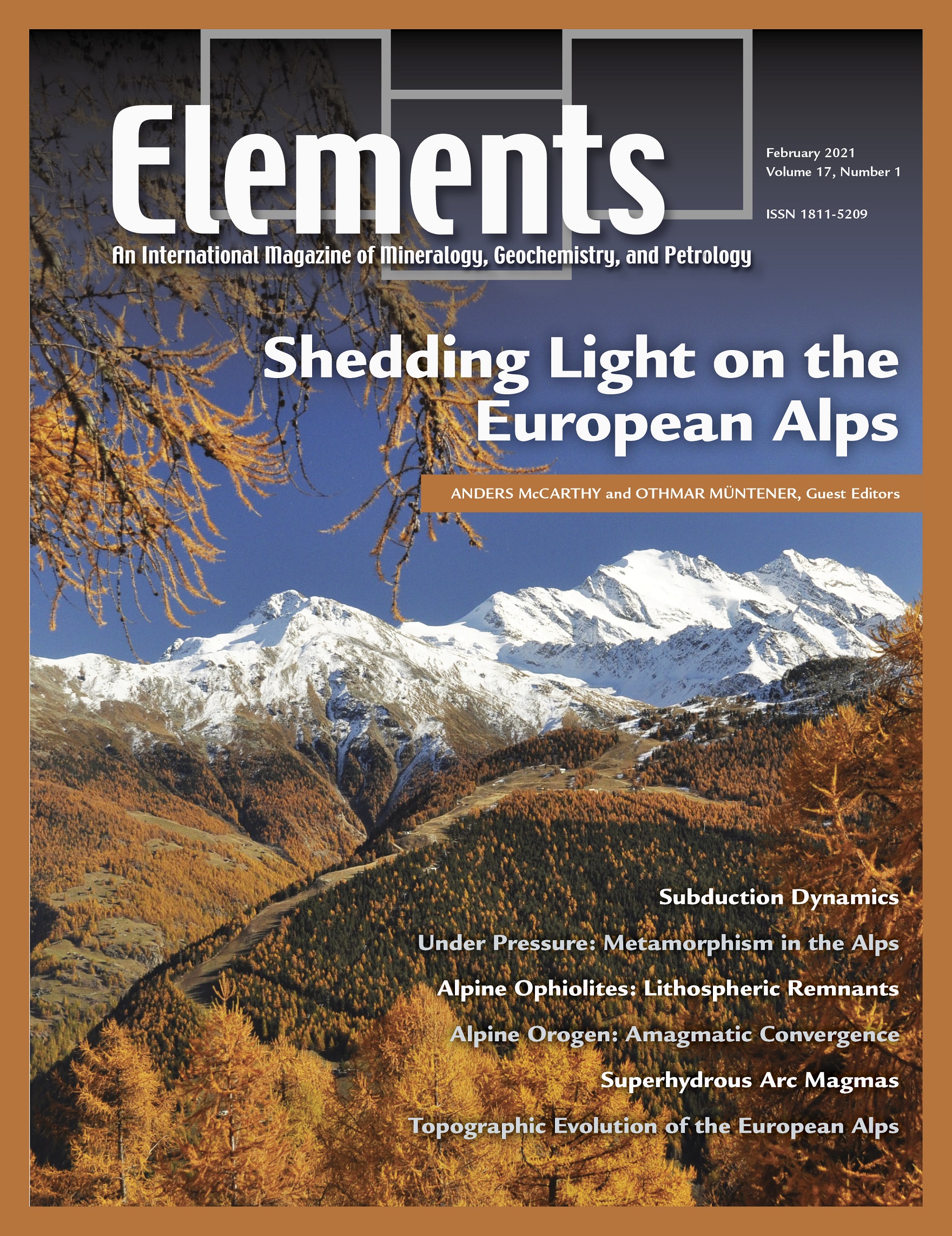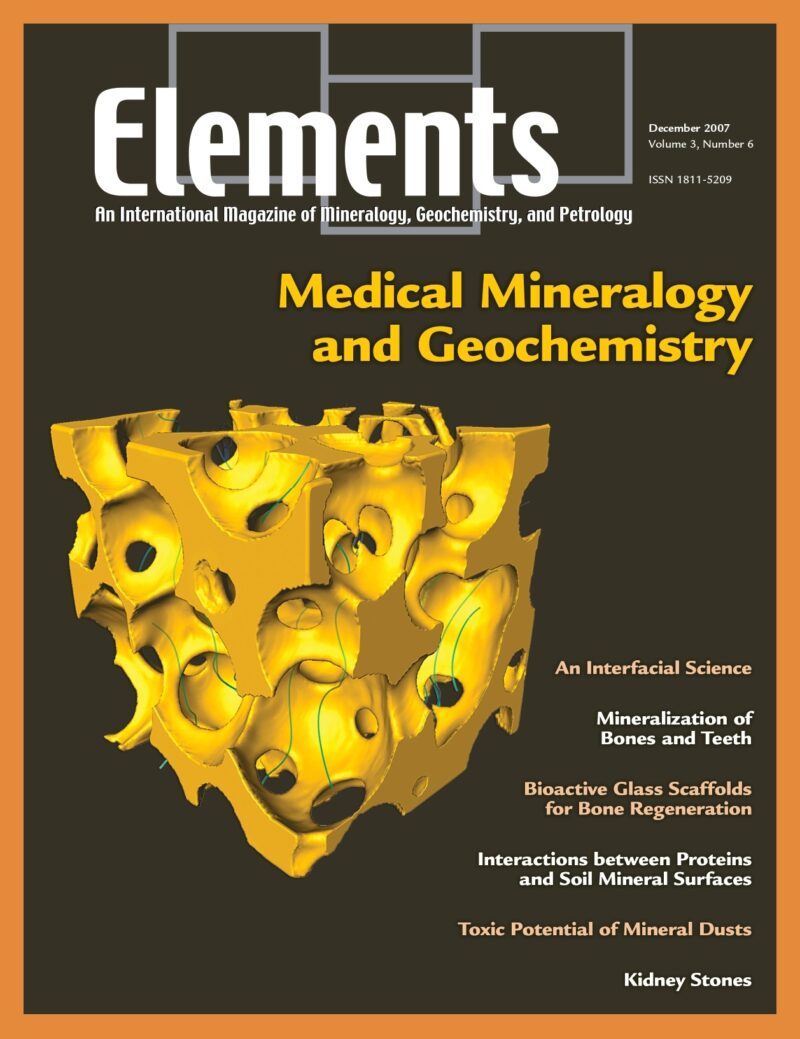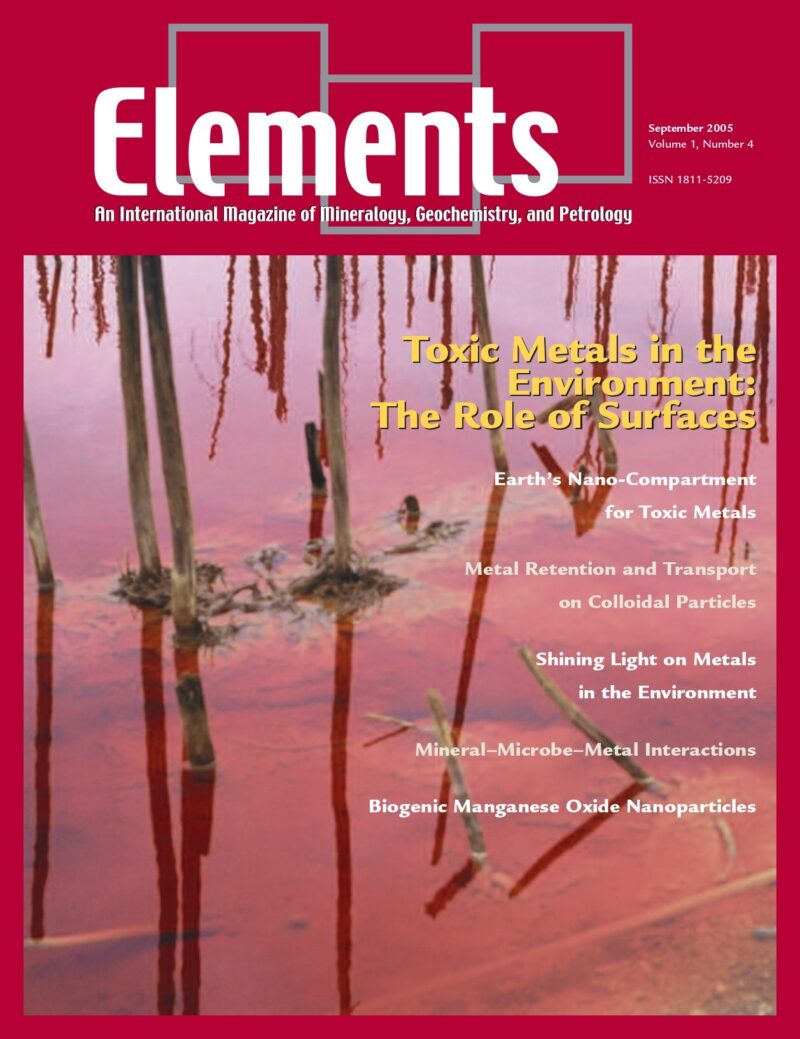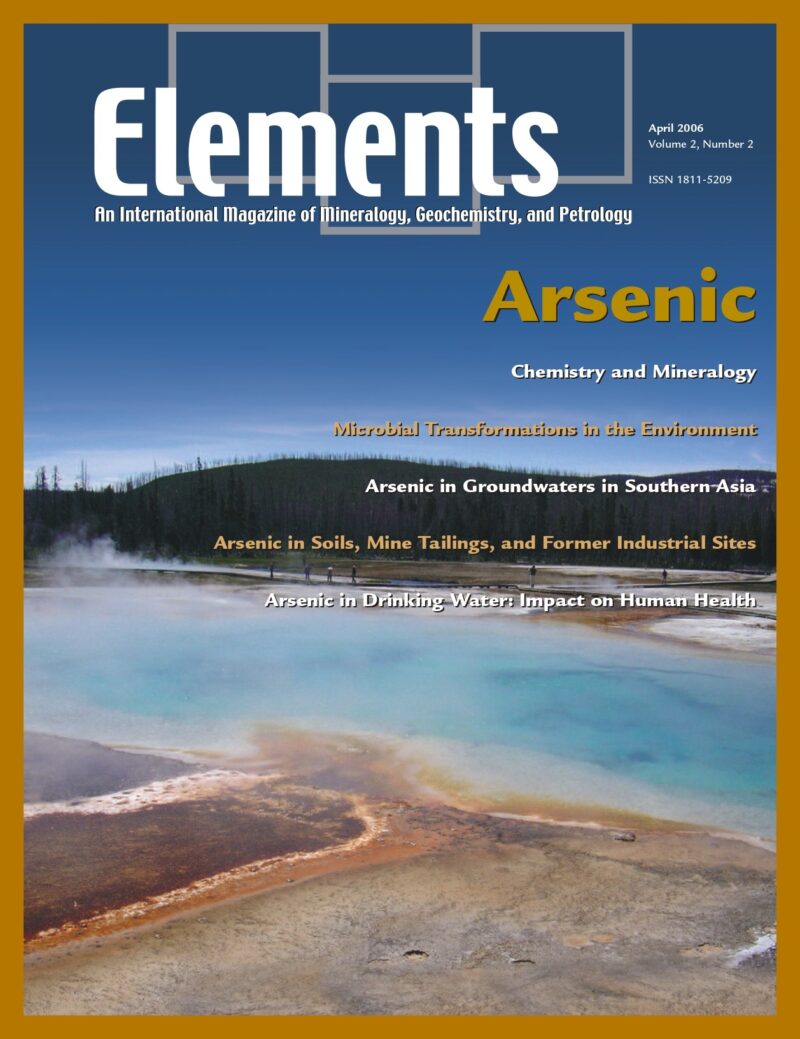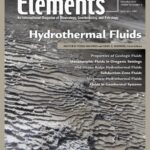
Hydrothermal Fluids, December 2020, Vol. 16, No. 6
June 28, 2024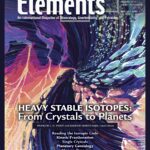
Heavy Stable Isotopes: From Crystals To Planets, December 2021, Vol. 17, No. 6
June 28, 2024Shedding Light On The European Alps, February 2021, Vol. 17, No. 1
$20.00
The European Alps are one of the most studied orogens in the world. Research over last 30 years is forcing us to rethink our understanding of Alpine evolution: new concepts have emerged that question long-established paradigms.
Shedding Light On The European Alps
February 2021, Vol. 17, No. 1
The European Alps are one of the most studied orogens in the world. Research over last 30 years is forcing us to rethink our understanding of Alpine evolution: new concepts have emerged that question long-established paradigms. We provide a petrological, geochemical, and tectonic overview of the Alpine Orogeny, from rifting and spreading to subduction and collision and, finally, to post-collisional uplift and erosion. In this issue, we shed light on the current debates regarding the origins of (ultra)high-pressure metamorphism, the origins of syncollisional magmatism, and the evolution of rifting and ocean spreading. We also examine the consequences of the new interpretations on the dynamics of subduction and collision.
Why You’ll Love Elements Magazine:
- Expert Contributors: Articles written by renowned researchers in the field of geoscience.
- Engaging Content: Join a community of readers who are passionate about Elements.
- Exceptional Quality: Each issue is printed on high-quality paper with stunning visuals and detailed illustrations that bring complex scientific concepts to life.
Order your copy of the February 2021 issue of Elements magazine today and delve into shedding light on the European Alps.
Related products
-
Medical Mineralogy And Geochemistry, December 2007, Vol. 3, No. 6
$20.00Medical mineralogy and geochemistry is an emergent, highly interdisciplinary field concerned with both normal and pathological interactions between minerals or amorphous inorganic solids and biomolecules or cells within the human body, and the transport and fate of prions and protein toxins in the soil environment. Prior research has, appropriately, focused on the complex genetic and molecular biological aspects, but there is a growing recognition of the vital need for understanding the surface and bulk properties and reactivities, especially at the challenging nanoscale characteristic of biomacromolecules and biominerals.
-
Toxic Metals In The Environment: The Role Of Surfaces, September 2005, Vol. 1, No. 4
$20.00Metals are prevalent in the environment. They are derived from both natural and anthropogenic sources.
-
Arsenic, April 2006, Vol. 2, No. 2
$20.00Arsenic is an element known throughout history as a classic poison. Currently, very small but highly significant concentrations of this element in drinking water supplies are causing massive health problems to many millions of people in some of the world’s poorest nations, and more localised sources related to mining and processing are also a concern.

